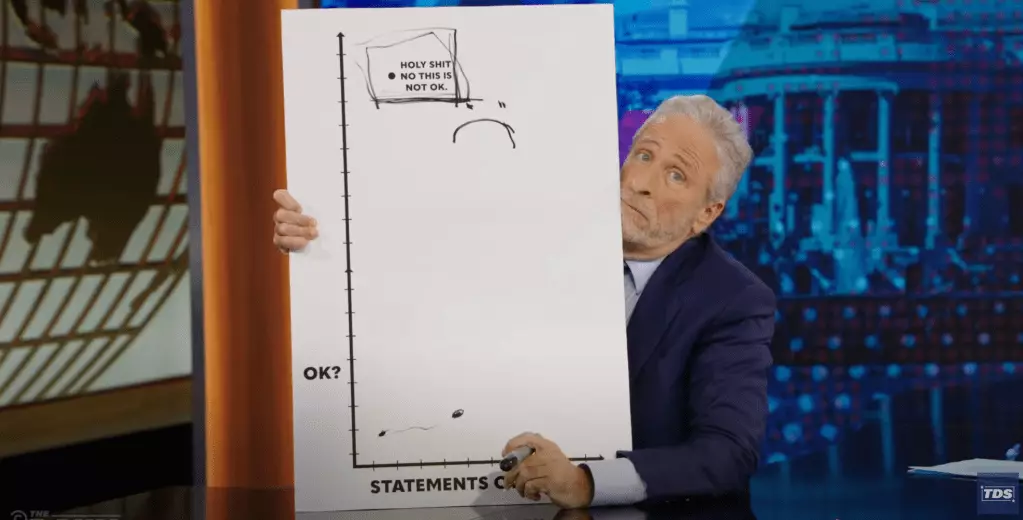In a world overwhelmed by political chaos, the challenge of discerning what deserves our emotional investment has never been more daunting. Jon Stewart, the political satirist renowned for his poignant commentary, recently introduced a revolutionary tool on *The Daily Show*. This wasn’t merely a humorous ploy but an earnest attempt to systematize the barrage of outrageous statements emanating from Donald Trump’s presidency. His ingenious chart, plotting “OK?” against “statements over time,” aims to offer viewers a tangible way to measure their reactions to Trump’s unpredictable utterances.
Stewart brilliantly sets the tone by borrowing the familiar formula from *Shark Tank*, drawing viewers into a space where financial decisions meet absurd political commentary. He frames the conversation about tariffs evolving into discussions about dolls and pencils, prompting many to wonder: “What deserves our ire?” Yet, beneath the clever presentation lies an insight that invites deeper consideration—should we always react, and if so, how intensely?
Emotional Digressions: The Trap of Outrage
Despite his best intentions, Stewart candidly admits his own struggles with emotional detachment as the discussion evolves. This is not just a moment for humor but a genuine reflection on a broader societal dilemma. When mentioning Trump’s bizarre proposals, such as reopening Alcatraz as a prison, Stewart’s frustration becomes palpable. He recognizes the futility in allowing oneself to be swept up in the absurdity, which raises an important question—how can we maintain our composure when faced with the ludicrous?
The reality is that Stewart’s chart, despite its design for rationality, becomes a vehicle for his own emotional slip. This signifies a crucial moment of vulnerability; even the sharpest critics can experience lapses in composure. The intentional pivot towards addressing this tendency allows viewers to empathize and engage with the process of political discourse on a more personal level, as it highlights our collective struggle with maintaining calm amid chaos.
Nonsensical Politics and Media Responsibilities
As the episode unfolds, Stewart confronts the media’s role in fact-checking Trump’s fantastical claims. His palpable anger regarding how journalistic time is consumed with debunking nonsensical assertions underscores a key critique: this misallocation threatens the very fabric of serious discourse. When Trump’s AI-generated image as pope is discussed, it shines a light on the absurd lengths to which our media must go—not just to report facts but to salvage some semblance of sanity in their narratives.
Stewart’s vocal exasperation is not simply humor; it serves as a reminder of the transitional state we find ourselves in—from serious political discussions to a theater of the absurd. He expresses a collective frustration not just directed at Trump but also aimed at the media landscape that feels forced to validate his absurd claims as legitimate discourse. Such ramifications provoke the audience to consider, how does one effectively engage with a leader who so frequently distorts reality?
Rethinking Engagement in a Volatile Era
Through this layered examination, Stewart emphasizes the importance of balancing critique with composure. Rather than getting lost in the emotional frenzy that Trump’s comments can evoke, viewers are called to engage thoughtfully. While the instinct to react is human, Stewart presents a compelling case for measured responses over knee-jerk outrage. Ultimately, navigating this chaotic political landscape might require us all to rethink how we process information, relaxing our emotional responses in favor of analytical engagement that can help cut through the noise of bombastic statements.


Leave a Reply